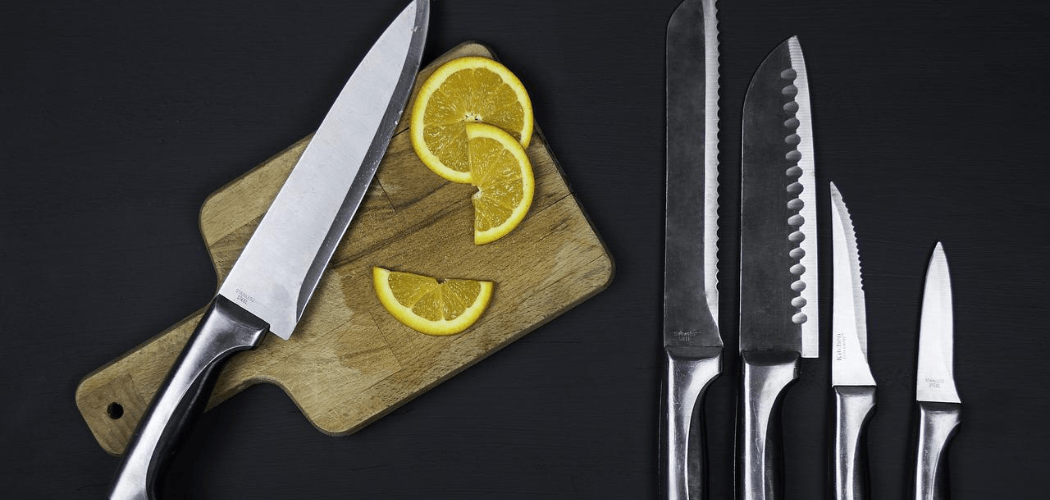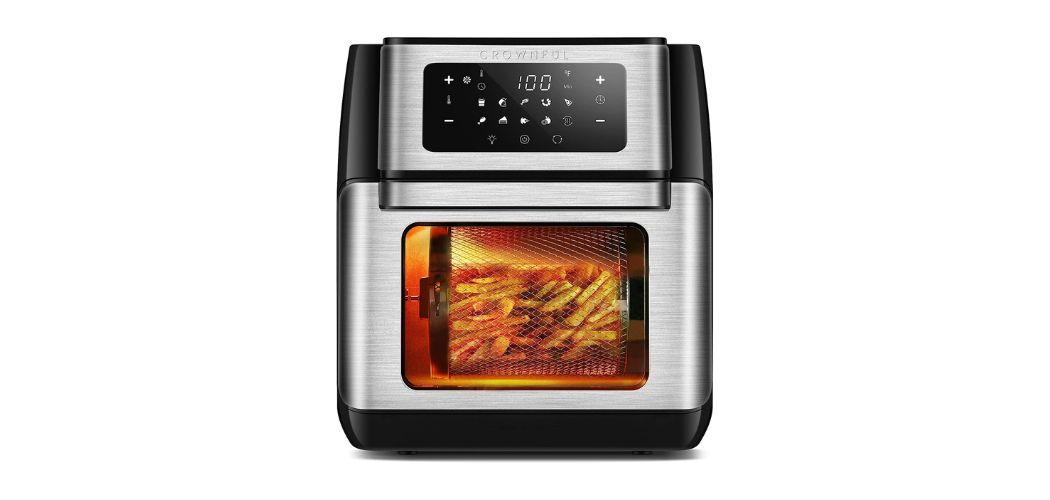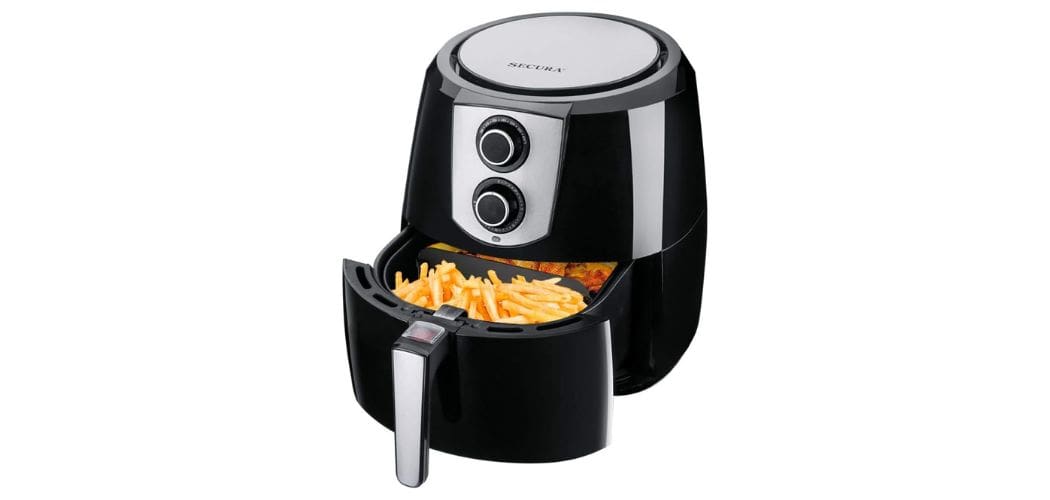There is nothing better than a new set of knives—slicing and dicing with razor-sharp kitchen knives instantly makes preparing a meal easier and more exciting. However, as you improve your knife skills, you may find yourself ready to part with some of your older tools.
But, hold on! You can’t just throw knives in the garbage, even if they appear to be too dull to cut something. Safety is a prime concern when it comes to disposing of old knives, but there are also ecological factors to consider.
How to dispose of kitchen knives without posing a safety risk or harming the environment? Keep reading to find out more on how to cautiously discard your kitchen knives.
Table of Contents
How Do You Know It Is Time To Discard Kitchen Knives?
A well-maintained high-quality knife has the potential to last nearly a lifetime. The dull edge can be easily sharpened, and minor flaws can be refined to make it almost as good as new.
However, there are some situations in which your knife should be retired and replaced; here are five of them.
1. The Blade Has Large Chips
Your knife blade will inevitably develop knicks and small grooves. All of this is normal wear and tear on a well-used knife. Small flaws can be easily smoothed out, but if the blade develops large chips or gashes, it’s time to replace the knife.
2. A Knife Tip That Is Bent or Broken
This would most likely happen if you dropped your knife and it landed tip-first on the floor (or a hard surface), or if you used the front part of the knife to cut into something extremely hard.
If only a small portion of the knife is broken, it can most likely be repaired; however, if a significant portion is missing, you should consider purchasing a new one.
3. The Rivets Become Dislodged
The rivets are small metal rounds that hold the knife’s metal portion (the tang) that extends into the handle.
When these come loose, the blade’s stability and balance are jeopardized. A good solution would be to replace the knife.
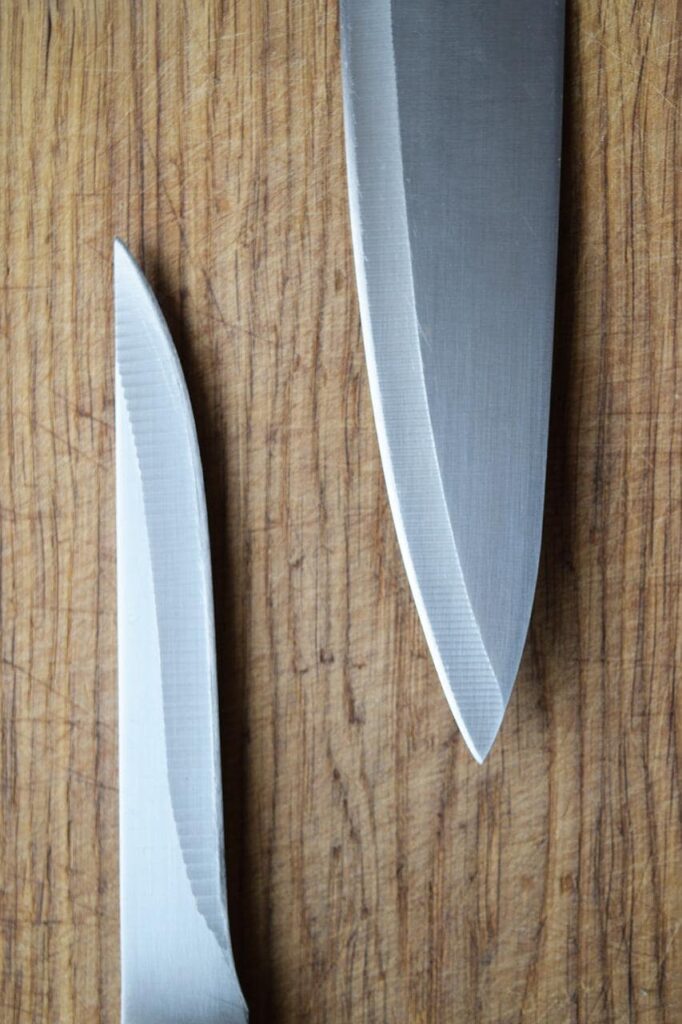
4. The Handle Detaches
The handle of a knife can break for a variety of reasons, the most likely of which are old age and a lower-quality knife. In either case, purchasing a new knife is the most secure option.
5. It Is Uncomfortable To Use Your Knife
Perhaps it’s too heavy or unbalanced, the blade is too large or too small, or the handle doesn’t grip well — whatever the case, your knife should be comfortable in your hand while you work.
If it isn’t, consider donating it to a better home and replacing it with one that is safe and comfortable for you to use.
However, no kitchen knife, no matter how high-quality, lasts forever. So, if the time has come to get rid of your old knives, there is one thing you should know: you cannot simply throw them away.
Ways To Safely Dispose Of Kitchen Knives
Knives can pose a safety hazard if not disposed of properly, so learning how to dispose of old kitchen knives is essential. Blades can sever trash bags and injure potential handlers such as yourself, family members, trash collectors, and disposal facility employees.
Knives are sharp objects and we cannot just throw them away without taking the right precautionary measures. Here are some steps to safely dispose of kitchen knives. These five techniques work with almost any old kitchen knife—stainless steel, ceramic, or carbon steel, you name it!
Step 1: Put Your Old Knives In The Trash
The first thing you could do is throw away your old knives. Keep in mind that this isn’t the most eco-friendly way to dispose of kitchen knives, but you can throw them in the trash if you do it properly.
Firstly, wrap the knife blade in a newspaper, bubble wrap, or an old piece of cloth. Wrap it in tape to keep everything in place.
Then, cut a piece of cardboard to the length of the blade (for instance, from the side of a cardboard box).
The cardboard should be folded in half and taped around the blade’s cutting edge.
You can also write “Sharp” or “Warning” on the cardboard to ensure that sanitation workers or others do not cut themselves while handling trash. Repeat for each knife before throwing it in the trash.
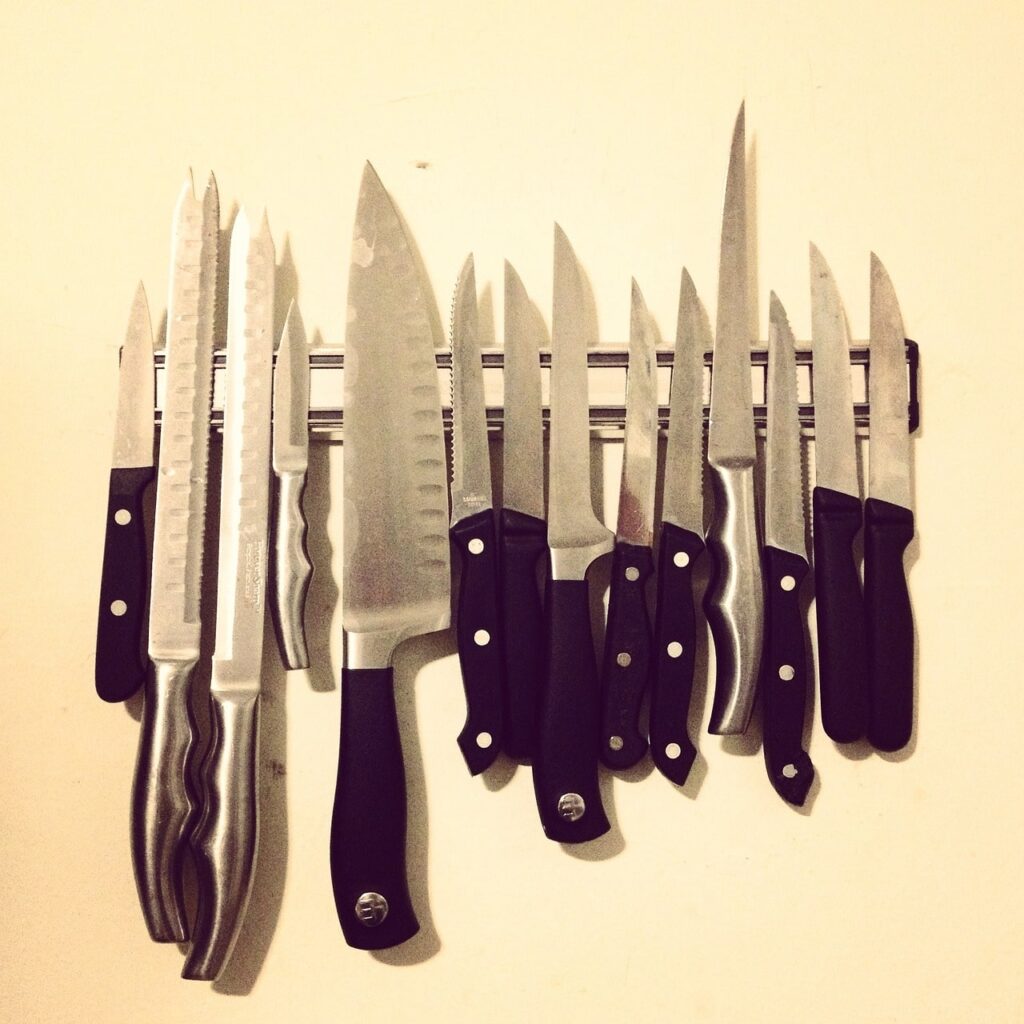
Keep in mind that throwing knives is not permitted in some cities and towns, even if you take all of the precautions outlined here.
Step 2: Take Your knives To a Recycling Center
Many recycling centers accept old kitchen knives, especially if the blades are stainless steel or carbon steel. Enquire with your local recycling center if they accept scrap metal.
If they do take it, wrap the knives in newspaper and cardboard the way we just described. Alternatively, you could place them in a box with the contents marked. Then you can take this parcel to the recycling center.
Step 3: Donate Your Old Kitchen Knives
You can donate your kitchen knives to charity, your local soup kitchen, the Salvation Army, or Goodwill. These organizations frequently accept donations of all types of kitchen items.
Wrap your knife blades in newspaper and cardboard before placing them in a box labeled “knives.” Then personally deliver them.
Remember that only knives in perfect condition should be donated. Before you take your knives to the donation location, call the organization and confirm that they accept kitchen knife donations.
Step 4: Sell Your Knives
You could also sell your kitchen knives. Make a listing on Facebook Marketplace, eBay, Craigslist, or any other bidding site of your choice.
Listings that include images of the knives always perform better. Make sure you’re also truthful about the condition of the knives.
Please check your local knife-selling laws before listing your knives if you go this route. The United States, for example, has relatively lax regulations regarding the sale of knives and even allows you to ship them via USPS.
Step 5: Drop Off Your Old Knives At The Police Station
Some may find it strange, but you can turn in your old knives to your local police station. If you’re concerned about them falling into the wrong hands, this could be the way to go.
Check with your local station to see if they accept kitchen knives. If they don’t, there may be a knife amnesty bin in your area where you can dispose of your old knives responsibly.
FAQs
Q1. How can I safely dispose of my old kitchen knives?
If possible, the best way to deal with old kitchen knives is to repair them. You could also consider selling or donating them if they are in good condition.
If none of these options are viable, you should take them to a scrap metal recycling center. Throw knives in the trash as a last resort.
Q2. How should I prepare knives to properly discard them?
It is critical to prepare kitchen knives for proper disposal whether they are given to a recycling center, thrown in the trash, or donated through a drop-off center.
The first step is to cover the blade so that it does not cut anyone who is handling the knife. Wrapping it in cardboard and securing it with tape is the best way to do this.
Q3. Can I throw kitchen knives in the trash can?
This is determined by where you live. Throwing knives in the trash is illegal in some municipalities, but it is legal in others as long as you handle them properly.
Check with your local sanitation department. However, before throwing away knives, look into other options such as recycling, donating, or repairing them.
Q4. How often should I replace kitchen knives?
A good-quality knife that is well-maintained can last a lifetime. However, there are some indicators that it’s time to replace a knife, such as the tip has been bent or broken, the knife blade has several large chips, or the rivets that hold the blade to the handle are frayed.
In Conclusion
Properly disposing of kitchen knives can be tricky. It is important to know the right steps to follow to effectively discard your old kitchen knives.
Knowing how to dispose of kitchen knives means you can do so without endangering your safety or harming the environment.
If your old knives are simply dull or chipped, you may be able to repair them and avoid throwing them away entirely. Otherwise, you have the option of recycling, selling, or donating them.

